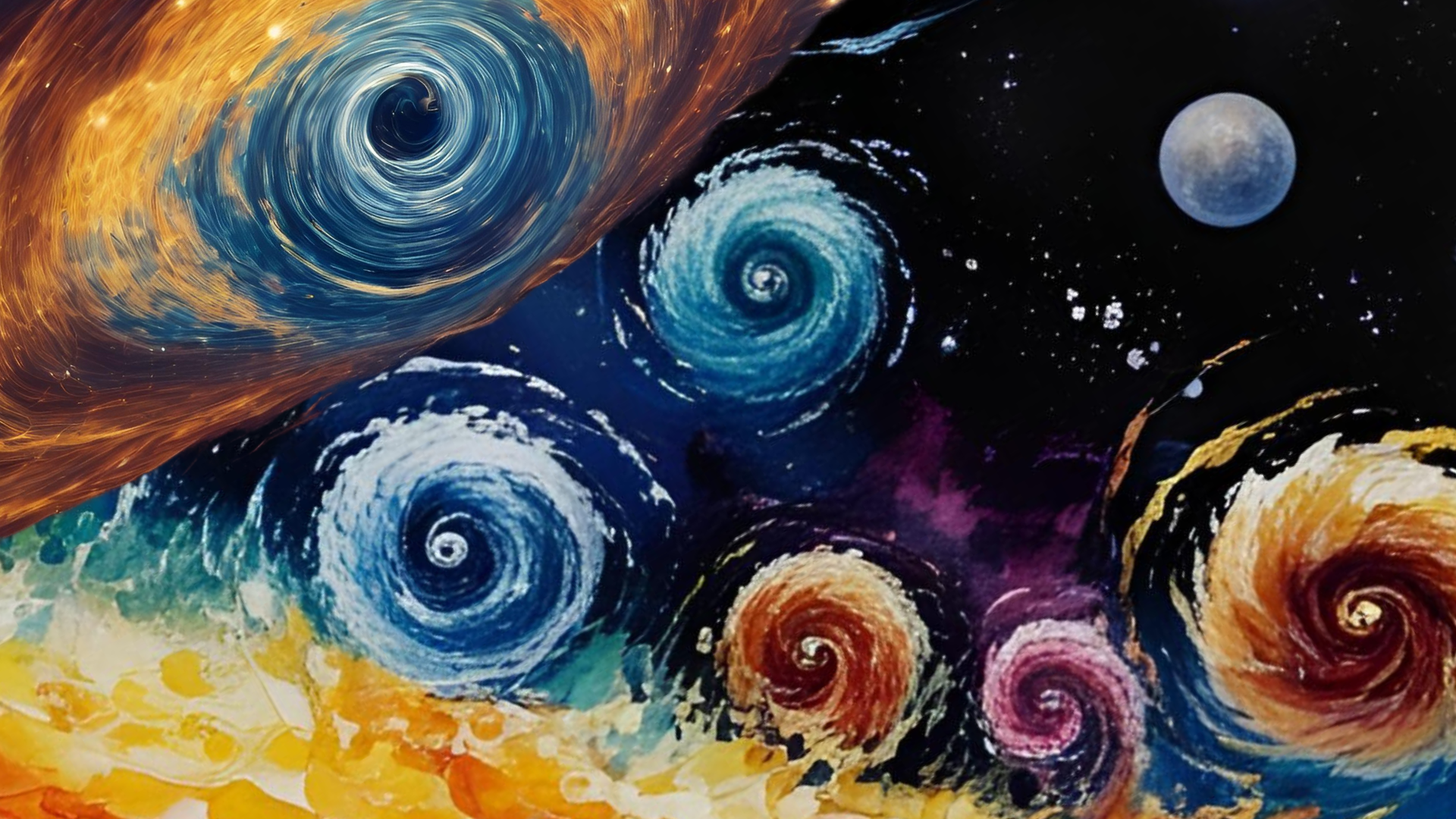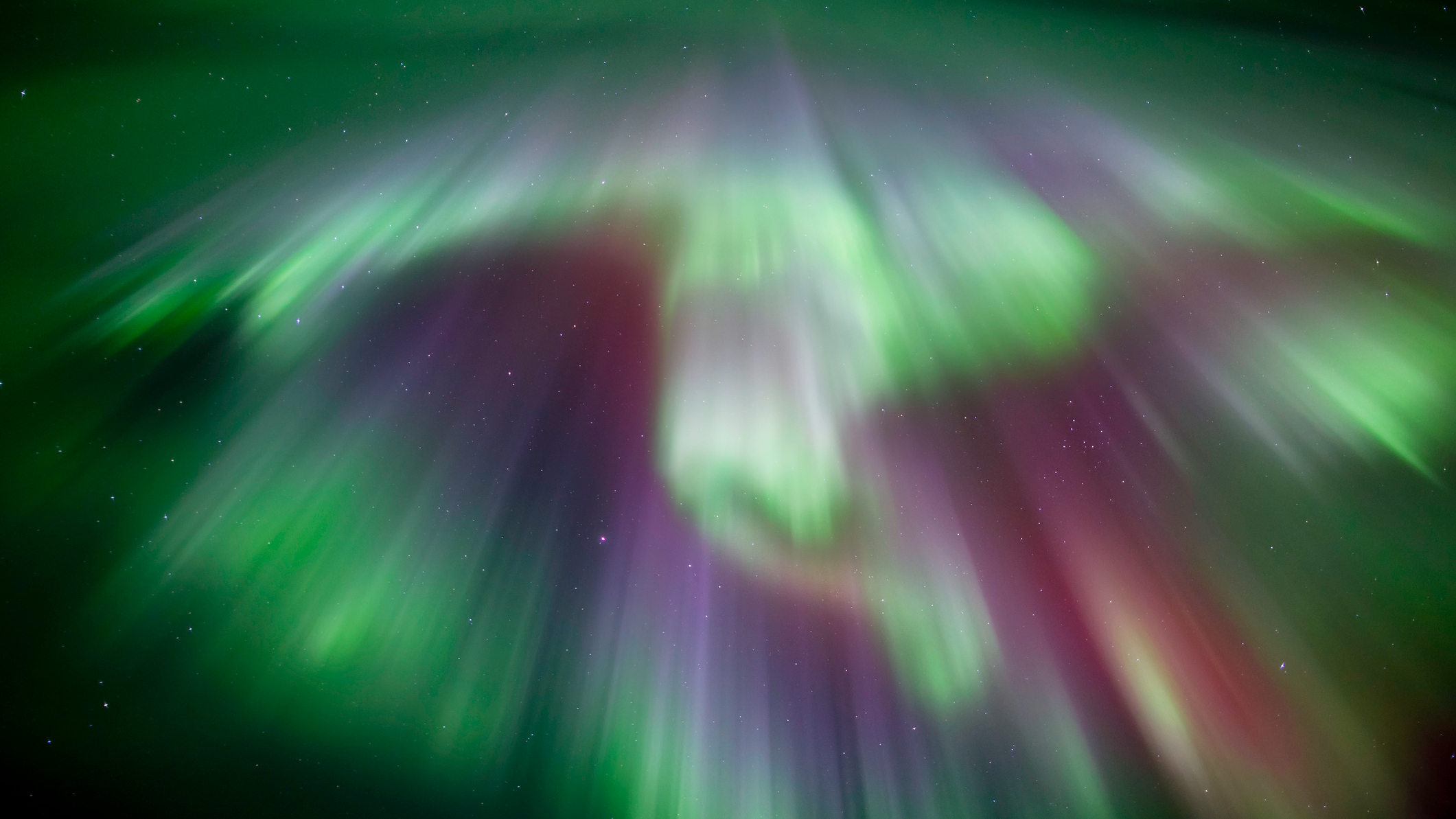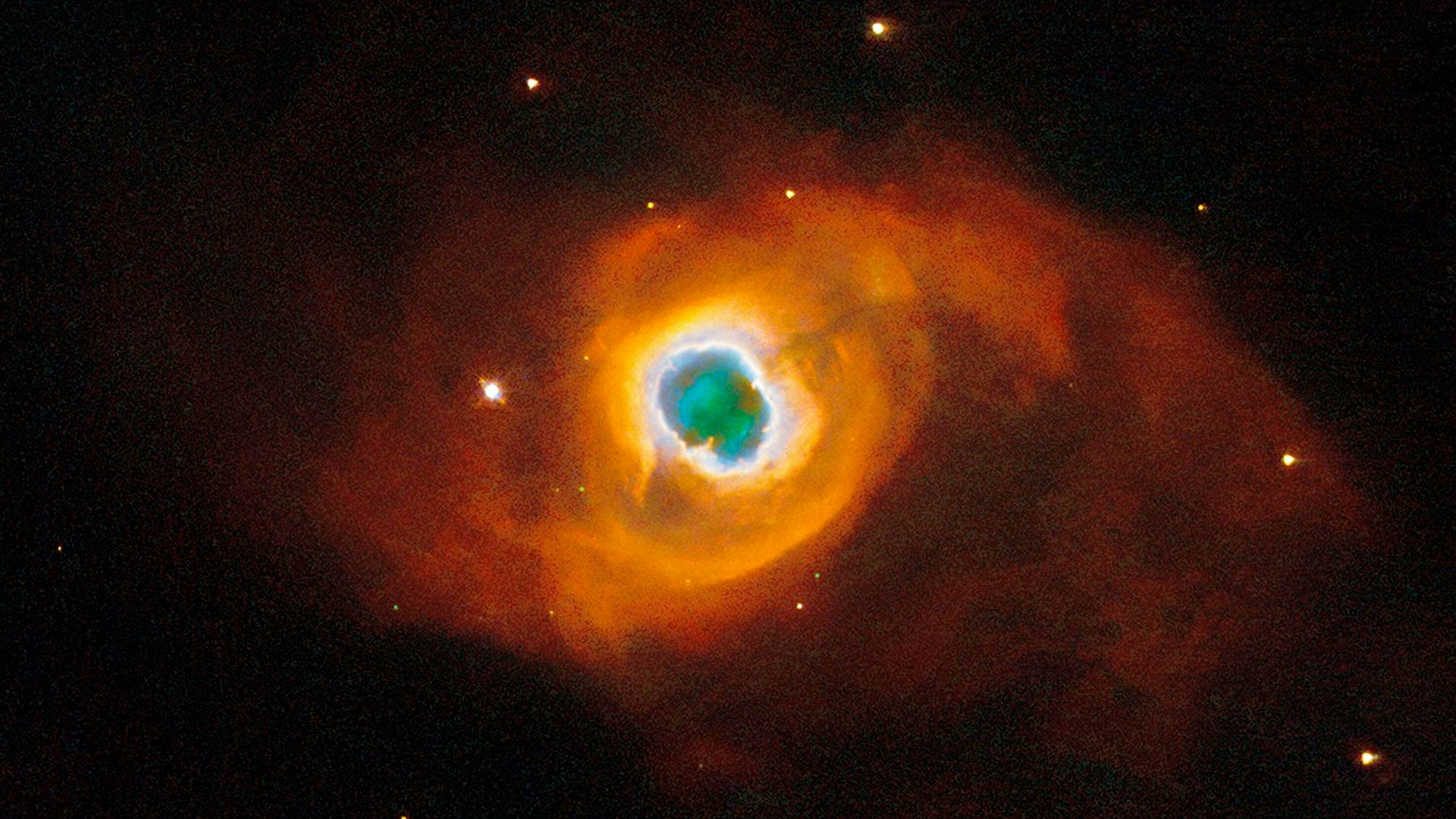Ancient 'guest star' may mark rare collision of stellar corpses

Centuries after Chinese and Japanese astronomers spotted a bright light in their skies, astronomers have pinned it to a stellar collision that unleashed a rare supernova 850 years ago.
A researcher has photographed the structure of Pa 30, a faint but fast-expanding nebula that surrounds one of the Milky Way's hottest stars. The new observations find that both the nebula and the star are remnants of a rare type of stellar collision. In addition, astronomers have calculated the nebula's age more precisely, confirmed the speed of its winds and concluded that Pa 30 really is, as suspected, the remains of the "guest star" spotted by stargazers and astronomers in 1181 AD.
Robert Fesen, an astronomer at Dartmouth College in New Hampshire, took three long-exposure shots of Pa 30 using a 2.4-meter Hiltner telescope at the Kitt Peak National Observatory in Arizona. These images show a highly structured, firecracker-shaped Pa 30 with dozens of very fine filaments ejected outward. Although the filaments are stunning, astronomers do not yet know what they are made of.
"I have worked on supernova remnants for 30 years," Fesen told reporters at the 241st meeting of the American Astronomical Society. "I have never seen anything like this."
Related: Butterfly Nebula glows red in spectacular image from NASA's Spitzer Space Telescope
"There are no remnants in our galaxy that look like this"
Named after its discoverer and this study's co-author, Dana Patchick, to mark his 30th discovery, astronomers already knew that Pa 30 is the consequence of an explosive collision of two dense, dead stars, or white dwarfs. During the resulting merger that stretched over millions of years, a rare supernova called a Type 1ax event unfolded.
During a 1a supernova event, a white dwarf that has accumulated material from a companion star by shredding it to pieces eventually explodes. A Type 1ax supernova is a rare subclass of 1a events in which the white dwarf does not completely explode, but sheds roughly half of its mass and leaves behind a hot core rich with heavy metals, much like a zombie star.
Get the Space.com Newsletter
Breaking space news, the latest updates on rocket launches, skywatching events and more!
Because there are so few 1ax events, we do not fully understand how these explosions leave surviving stars in their centers. Fesen's recent work on Pa 30 may provide better explanations of these processes.
"This remnant will allow astronomers to study a particularly interesting type of supernova that, up to now, they could only investigate from theoretical models and examples in distant galaxies," Fesen said in a statement.
Beauty, science and history
Astronomers have studied Pa 30 since 1181 AD, when Chinese and Japanese astronomers saw a point of light in the region now called Cassiopeia that matched or outshone the bright star Vega.
In 2014 and 2016, astronomers failed to find the expected signatures of a planetary nebula — emissions of hydrogen, oxygen and nitrogen — and struggled to pinpoint what, if anything, was in its middle. "You could barely see there was something there," Fesen said during the news conference of the blurry images taken early on.
But then, in 2018, French amateur astronomers using an 8-inch telescope noticed a very blue, very hot star in the center of Pa 30. They had captured a "very odd-looking spectrum," Fesen said, "unlike any central star of any planetary nebula."
In the same year, Russian researchers also found a blue star in the nebula's center and published a paper in 2019 that concluded that the star — seemingly 36,000 times brighter than the sun — is in fact a merger of two white dwarf stars.
Meanwhile, astronomers in Hong Kong went back to previously collected observations of Pa 30. Their 2021 paper reported, among other features, evidence for sulfur, and this finding formed the basis for Fesen and his team's latest work.
In late October 2022, Fesen and his team used a sulfur filter to click three long-exposure shots of the nebula. With these images, Fesen and his team confirmed that the nebula is expanding at 680 miles (1,100 kilometers) per second.
With Fesen's images, the team got accurate radial measurements of the filaments, which they used to calculate the nebula's age. While previous research estimated its age around 990 years, Fesen's team clocked it at roughly 850 years.
Finally, coming full circle, this age "is perfect for it to be the remains of the 1181 guest star," Fesen said in a statement.
"Astounding" winds
The structure of this nebula — filamentary with occasional small knots — is unlike the remnants of any other supernova. One possible reason, Fesen and his team concluded, could be because of the extremely high winds soon after the collision. Planetary nebulas typically have winds of a couple thousand kilometers per second, but the winds of Pa 30 reached 10,000 miles (16,000 km) per second.
"That just is unheard of," Fesen said.
The best current explanation of such high winds, according to Fesen, could be a magnetic field that spun up very fast due to speedy rotation of the central star. And current Type 1ax supernova models suggest that such high winds would have very likely occurred in the first two decades after the merger. So although the nebula's structure looks like the aftermath of an explosion, it actually is an "explosion modified by wind," Fesen said.
The optical images Fesen captured "only gives a hint of what it really looks like," he said. In particular, he hopes to determine the nature of the filaments by diving deeper into data from both the Hubble Space Telescope, which shows sulfur emissions in greater clarity, and the powerful James Webb Space Telescope.
Pa 30 would be bright in infrared emissions, and the detailed observations from Webb "should be amazing," Fesen said.
The research is also described in a paper posted Jan. 13 to the preprint server arXiv.
Follow Sharmila Kuthunur on Twitter @Sharmilakg. Follow us on Twitter @Spacedotcom and on Facebook.
Join our Space Forums to keep talking space on the latest missions, night sky and more! And if you have a news tip, correction or comment, let us know at: community@space.com.

Sharmila Kuthunur is a Seattle-based science journalist focusing on astronomy and space exploration. Her work has also appeared in Scientific American, Astronomy and Live Science, among other publications. She has earned a master's degree in journalism from Northeastern University in Boston. Follow her on BlueSky @skuthunur.bsky.social









